Most of my photos focus on the older parts of Tokyo. The areas that are changing rapidly, and yet at the same time still contain so much of the past. A feature of the city I find infinitely fascinating, but obviously it’s not something unique to the capital, so below then are photos on a similar theme taken during a recent stay in Osaka.
All of them were shot in Nishinari ward, which is well known as the city’s most neglected district. An aspect that’s very obvious due to the many dilapidated structures, along with a large day labourer population. A sprawling neighbourhood that feels very much like Japan, and yet at the same time still very different from even the corresponding part of Tokyo.
It’s a place that for want of a better description feels real. Genuine too when compared to the shiny glass buildings and fancy shops that increasingly make up so much of modern Japan. Also, and much more importantly, genuine in regards the people. There’s an openness on the streets and in the many little bars, eateries and coffee shops, with no need at all for any airs and graces, let alone fake politeness. Many of the residents most definitely don’t have much, but they do at least have the benefit of being able to be themselves, something that’s arguably not all that common in Japan. At least not in public, anyway.
All that said, I was only a visitor, so these are just thoughts from my time staying there. Thoughts I can hopefully either confirm or dispel during future visits. Trips that need to be made sooner rather than later, as just like the photos show, modern Osaka is visibly on the march.
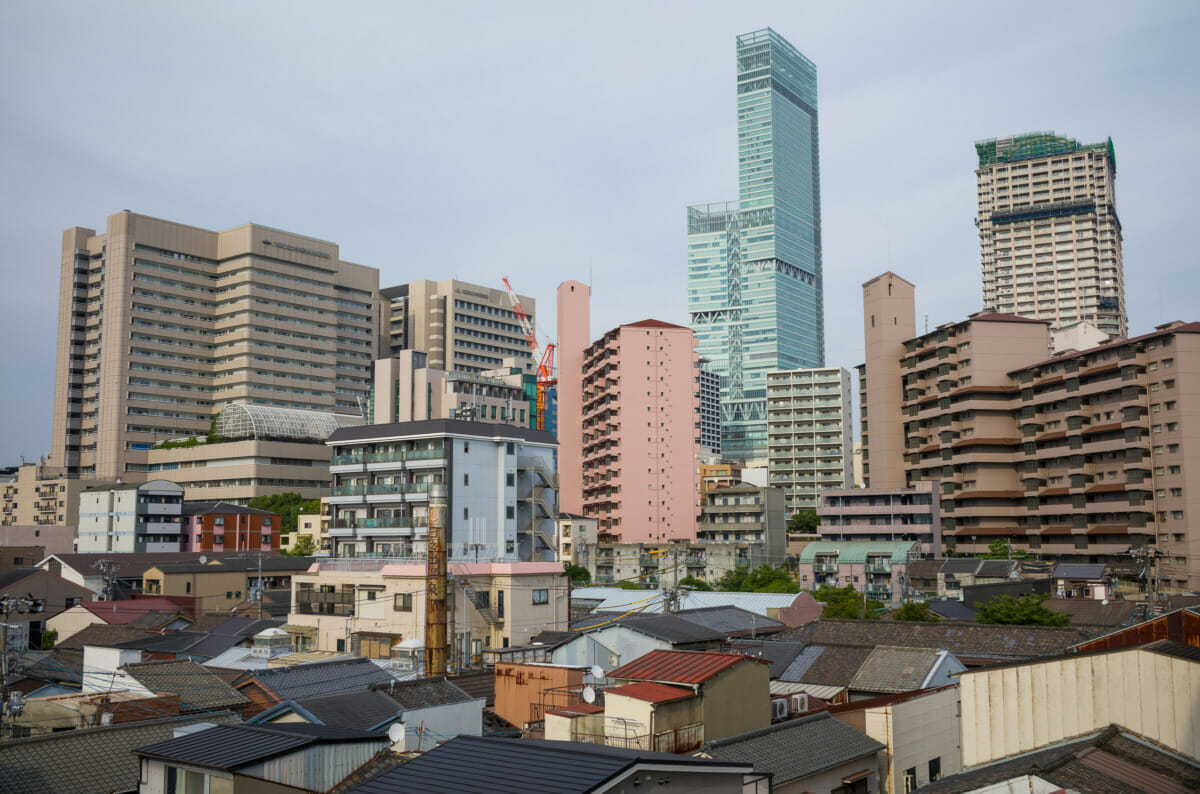
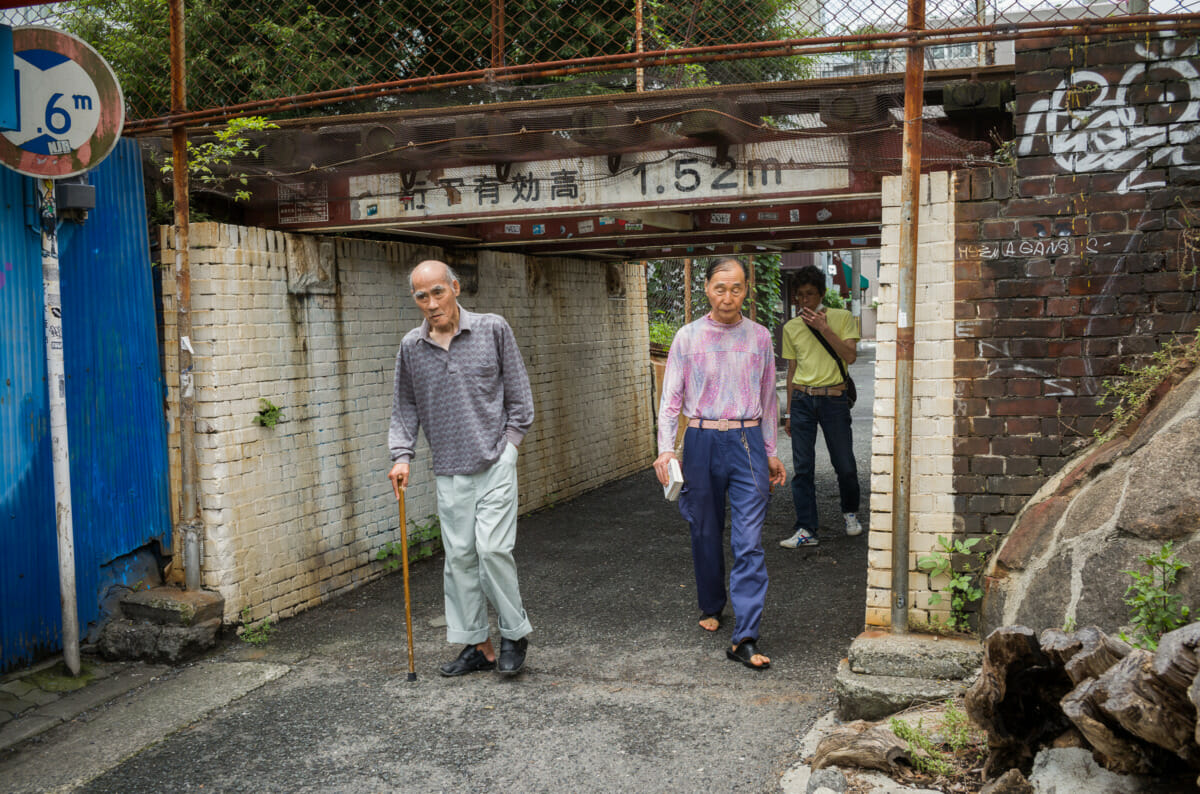
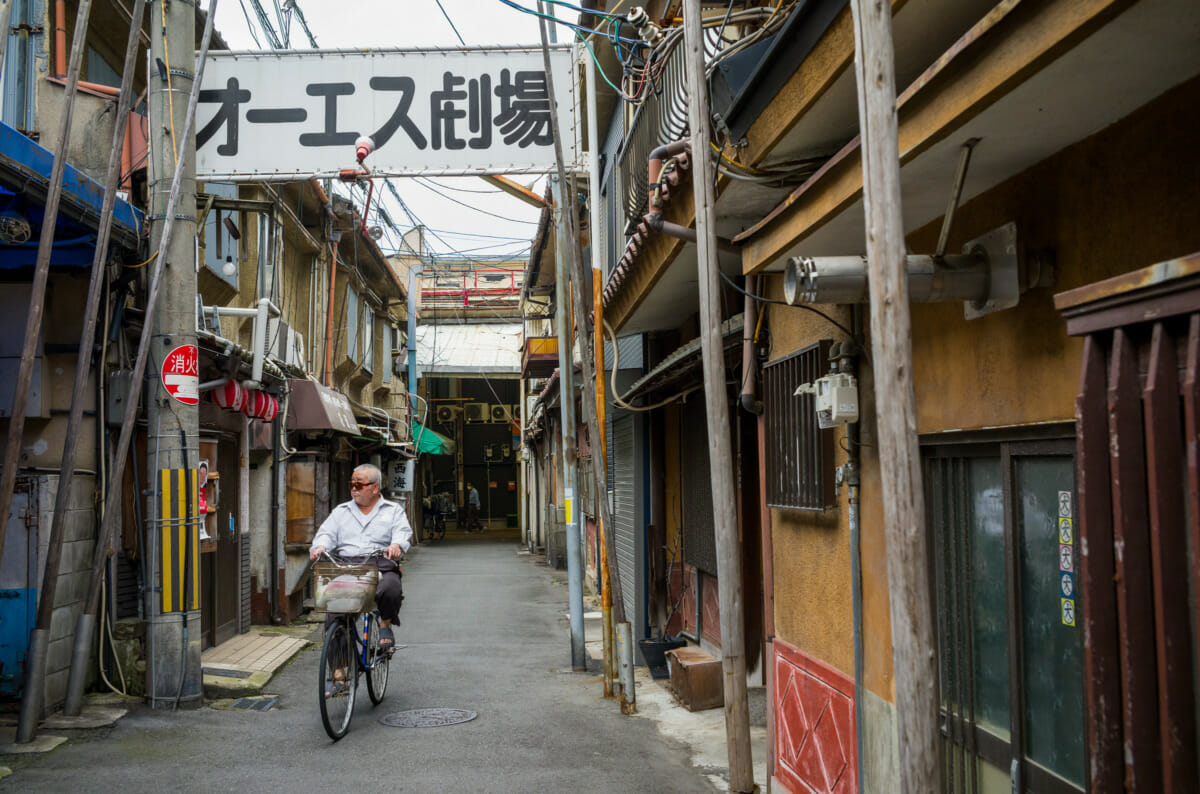
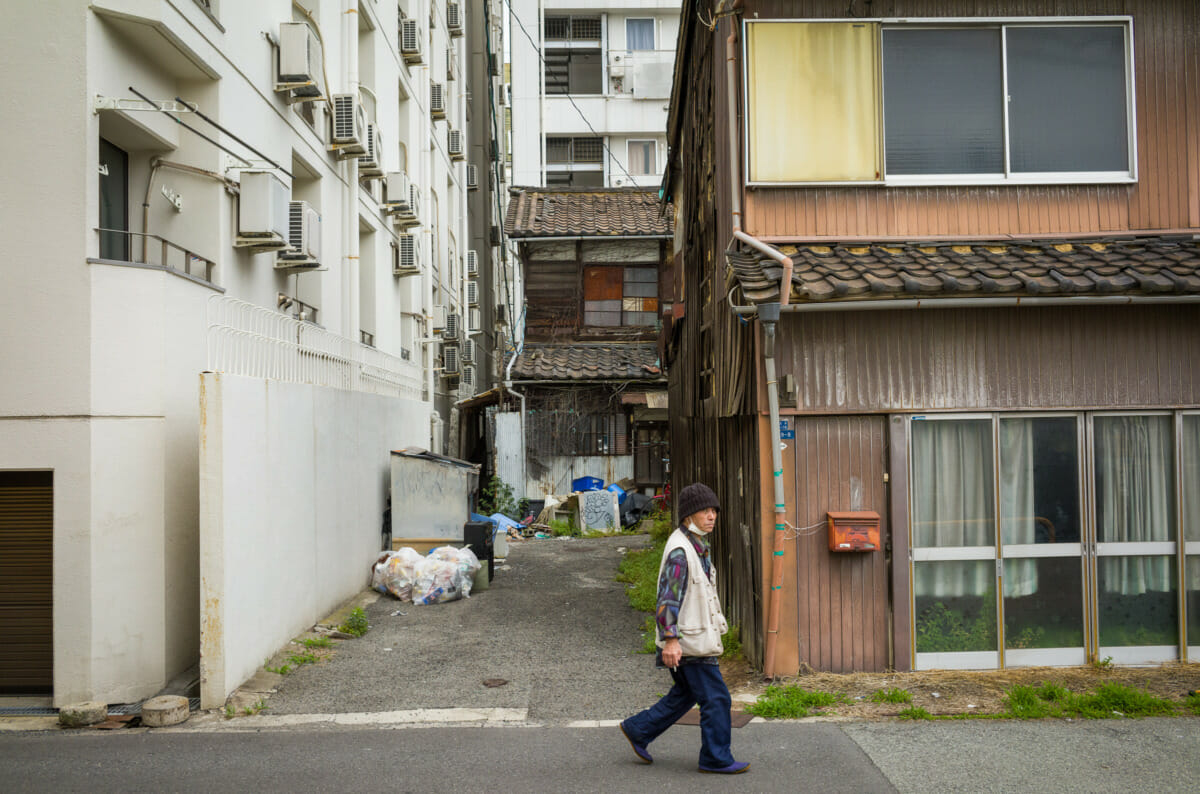
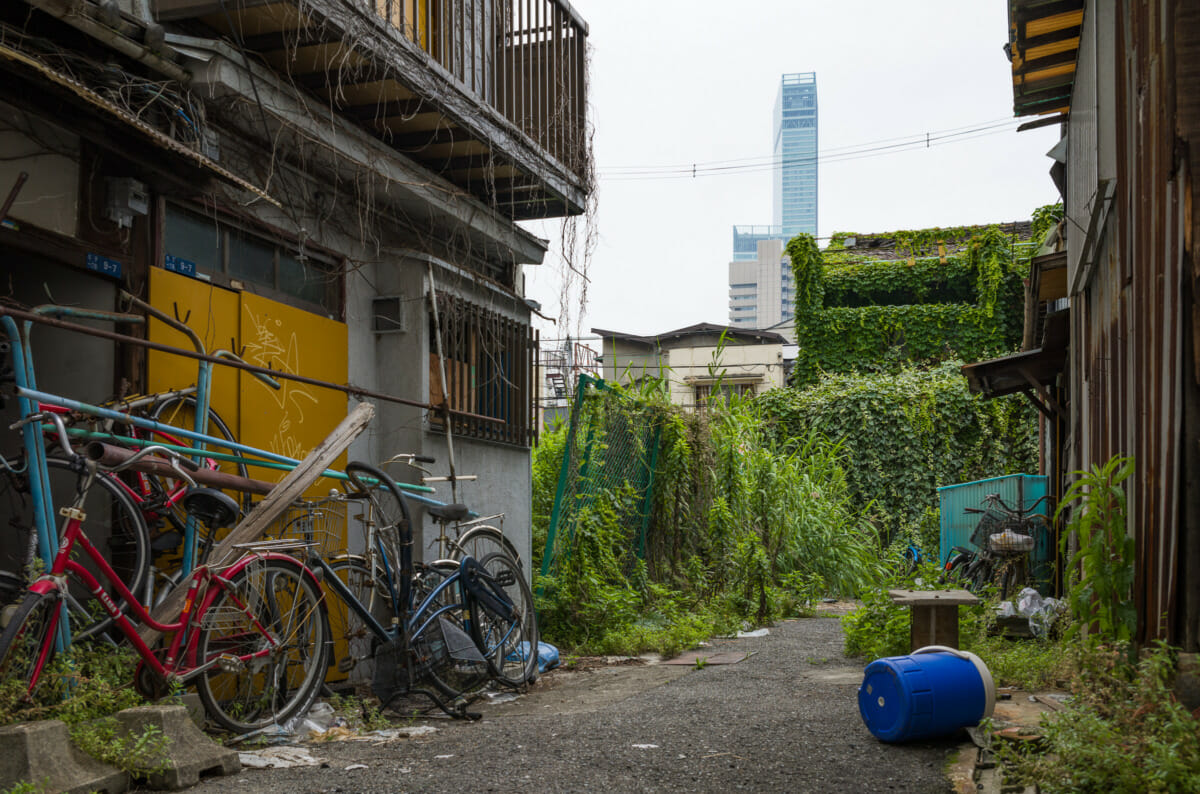
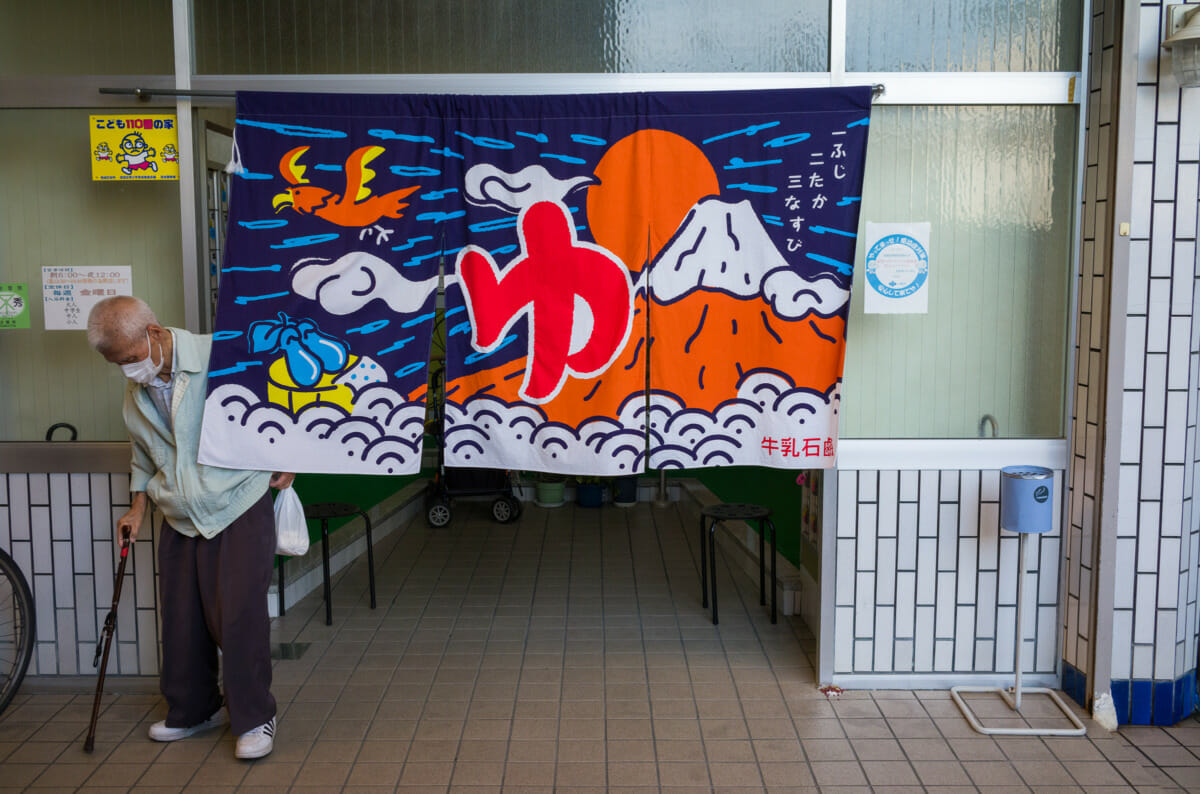
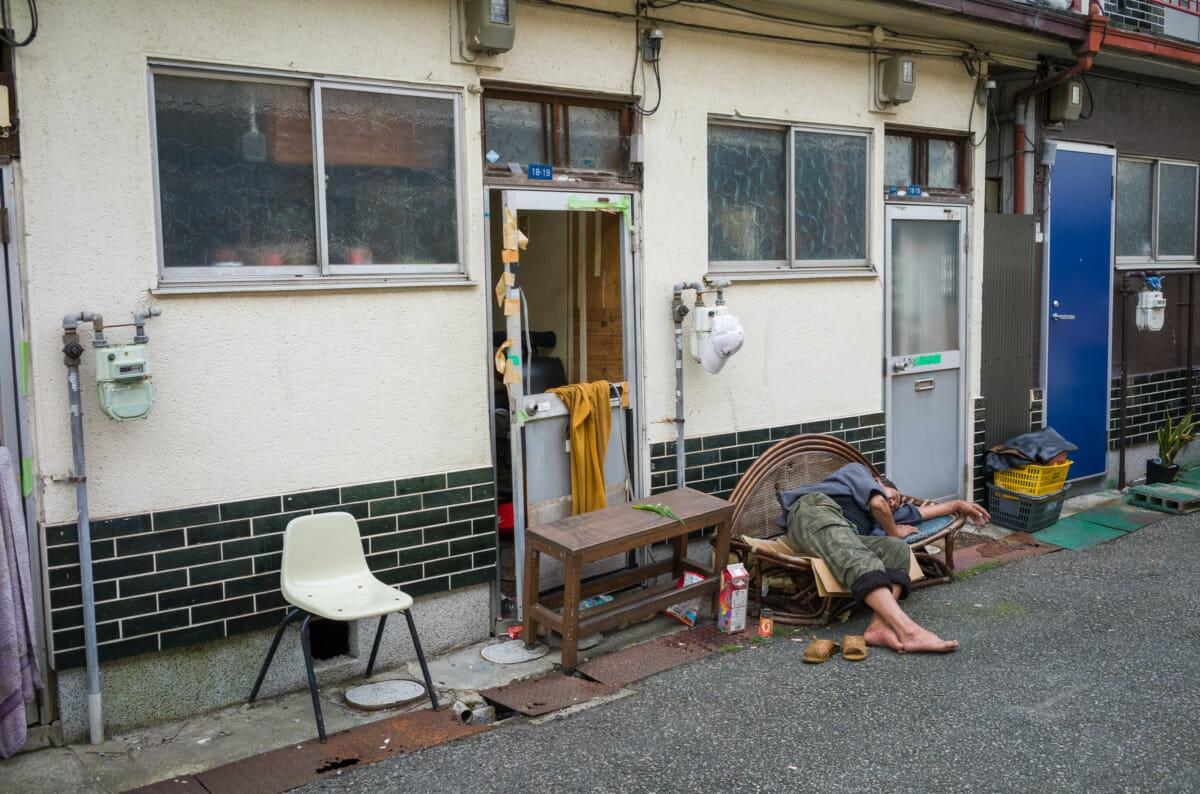
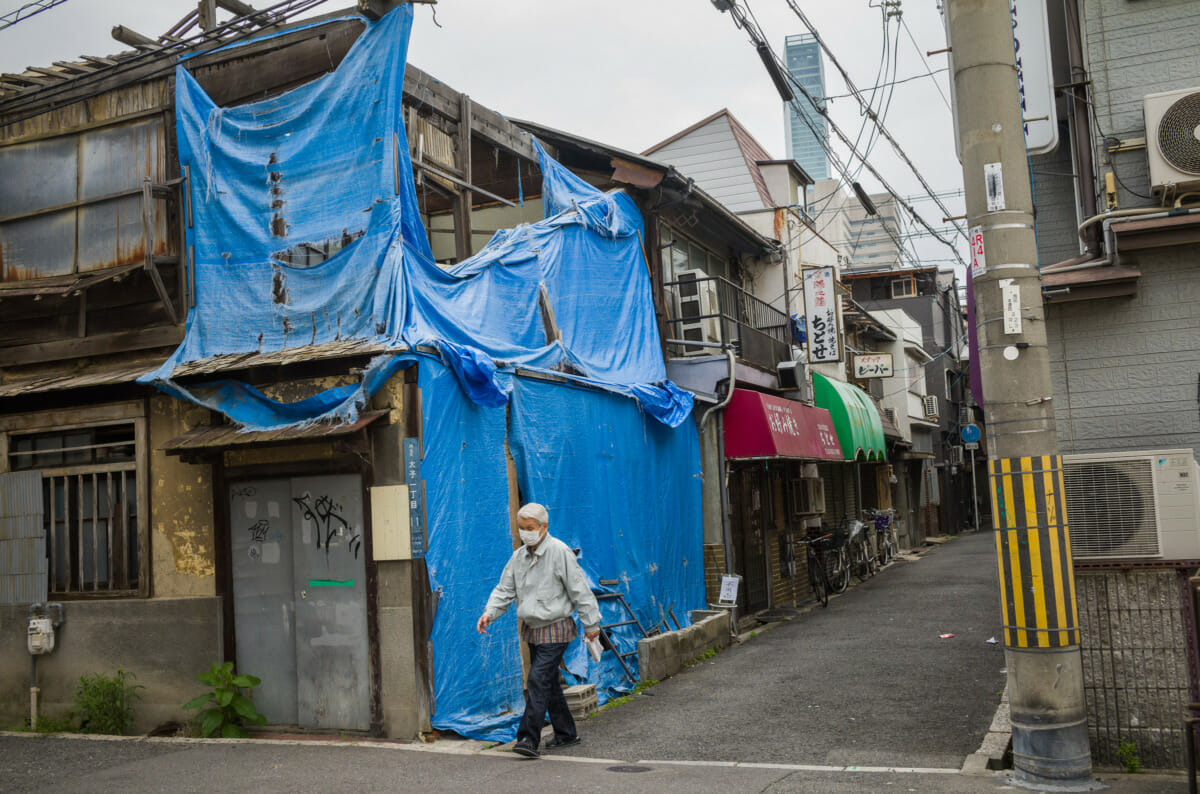
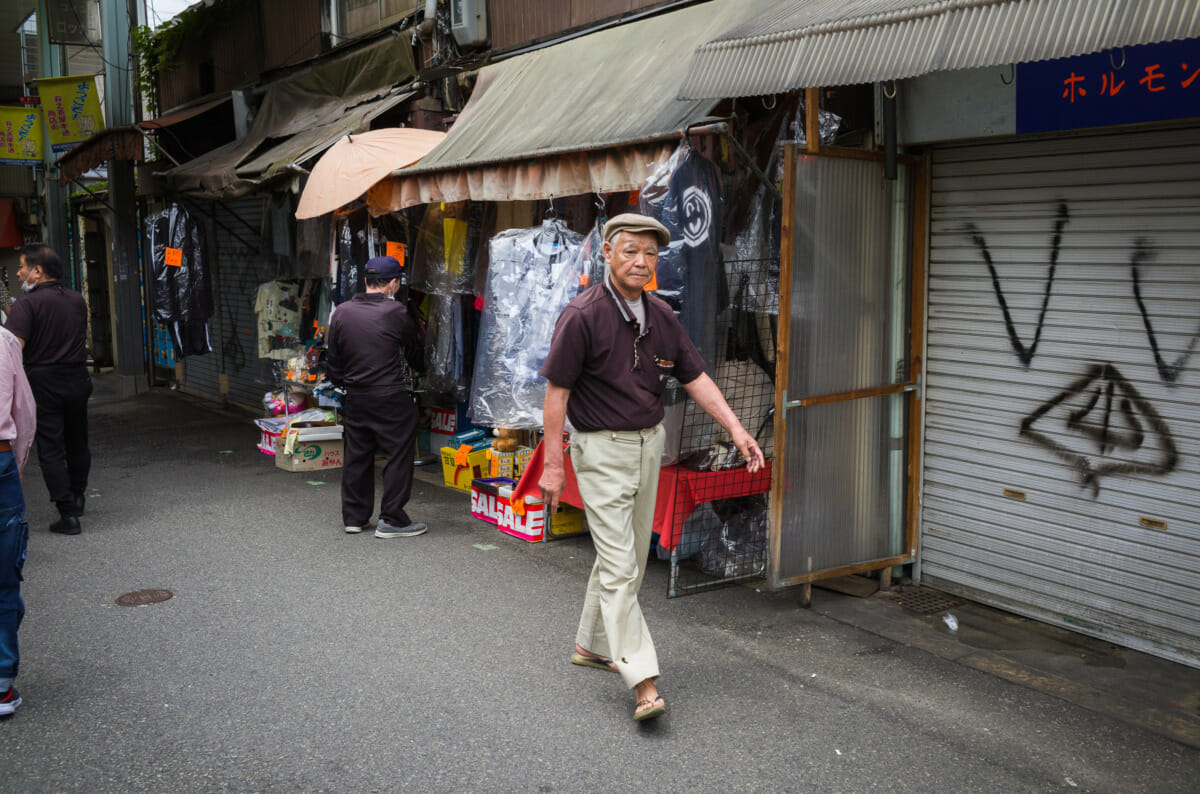
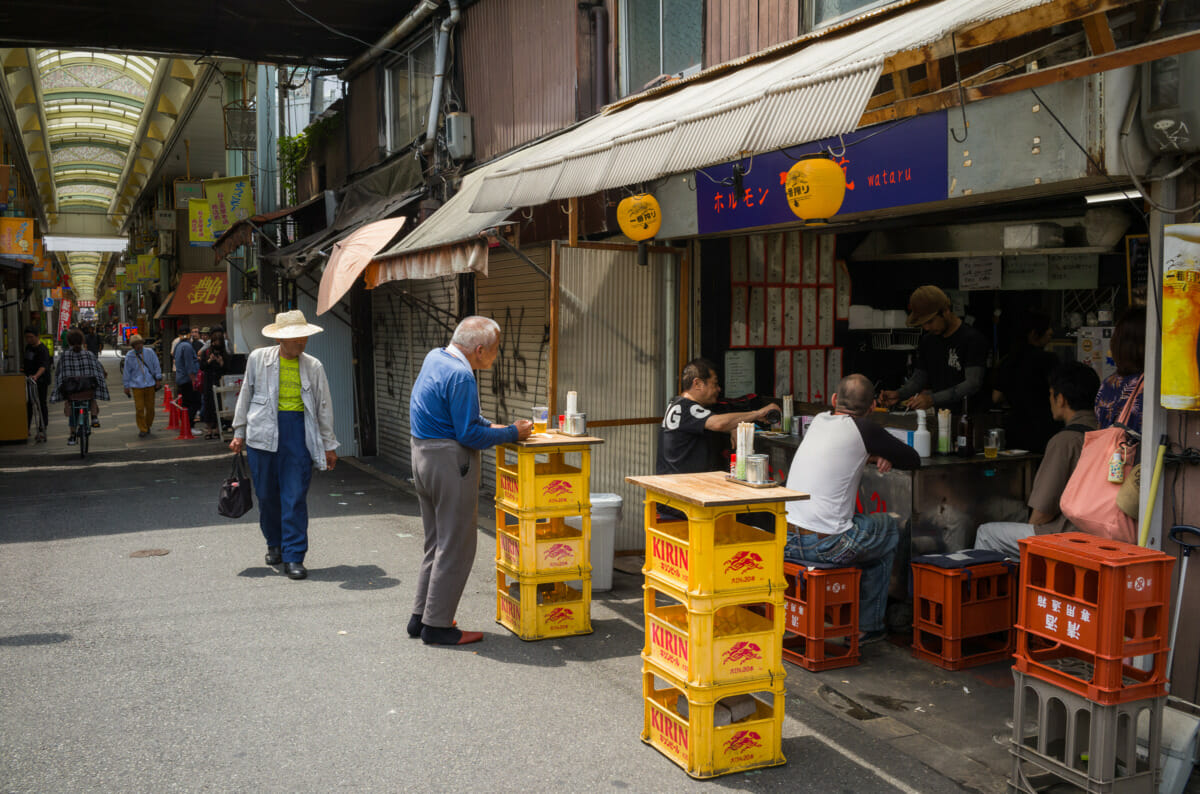
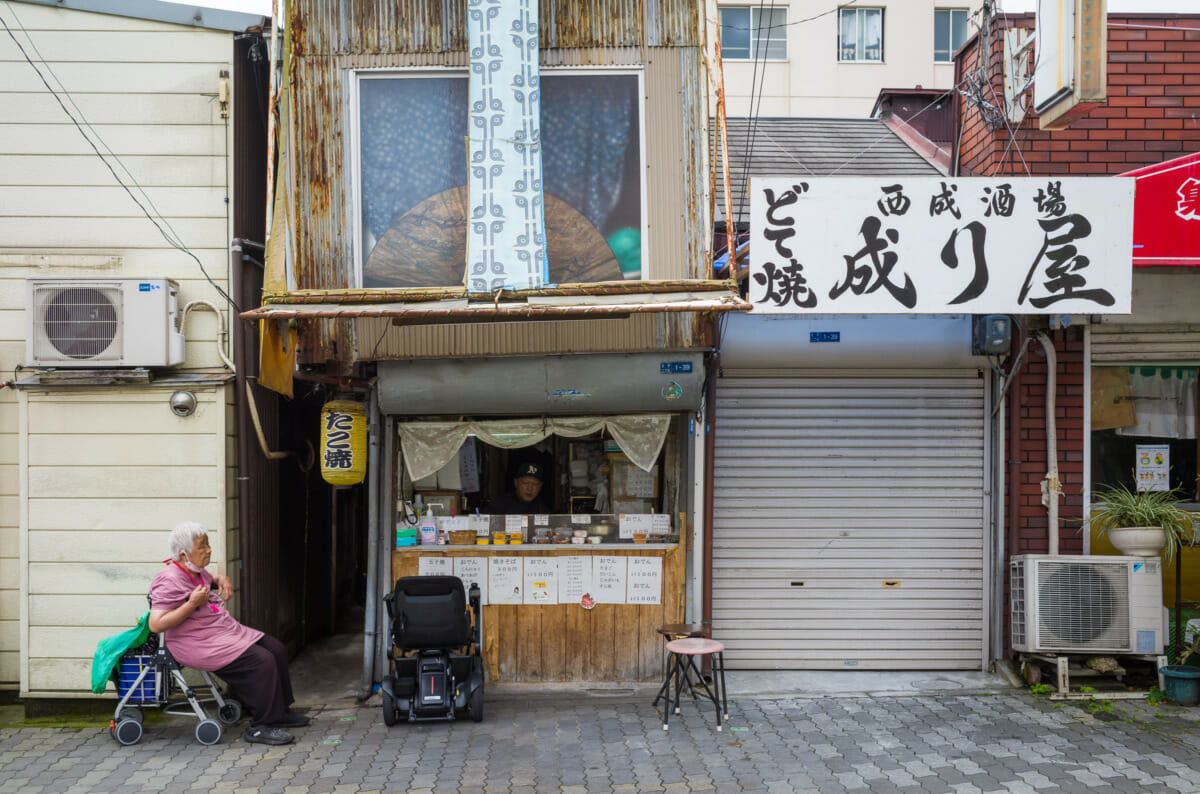
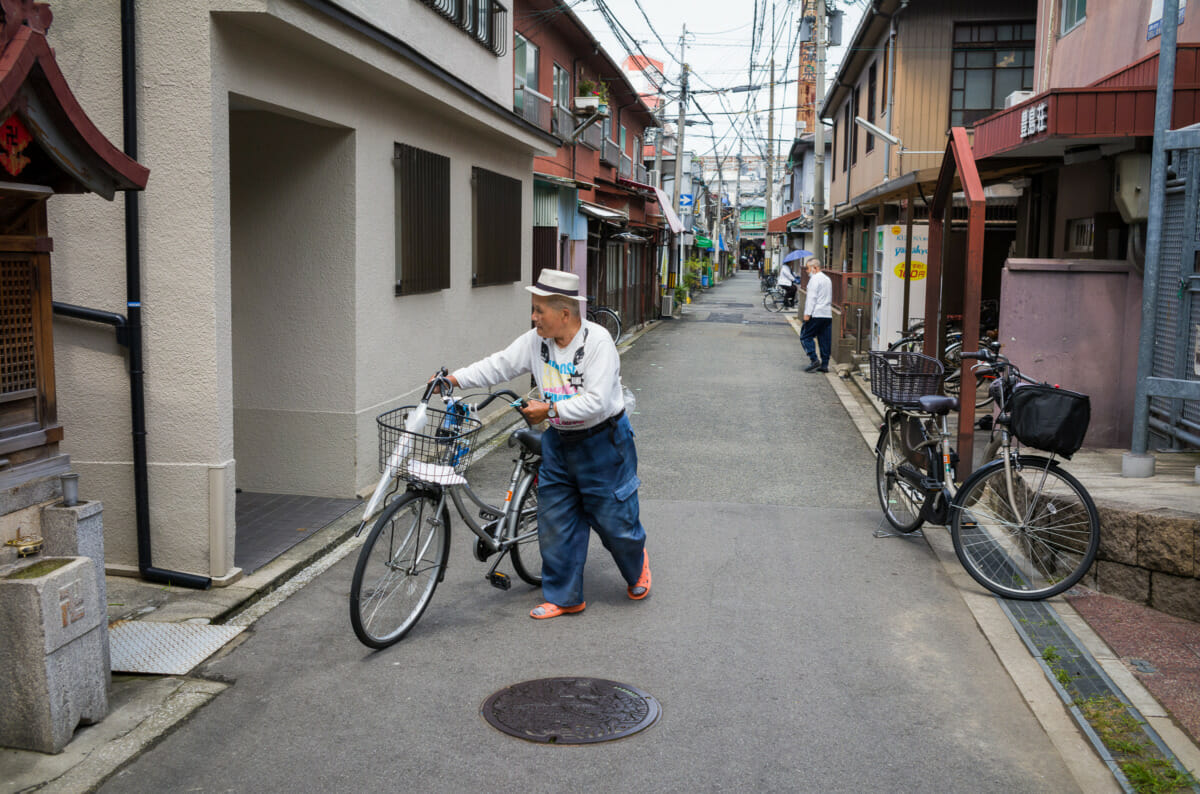
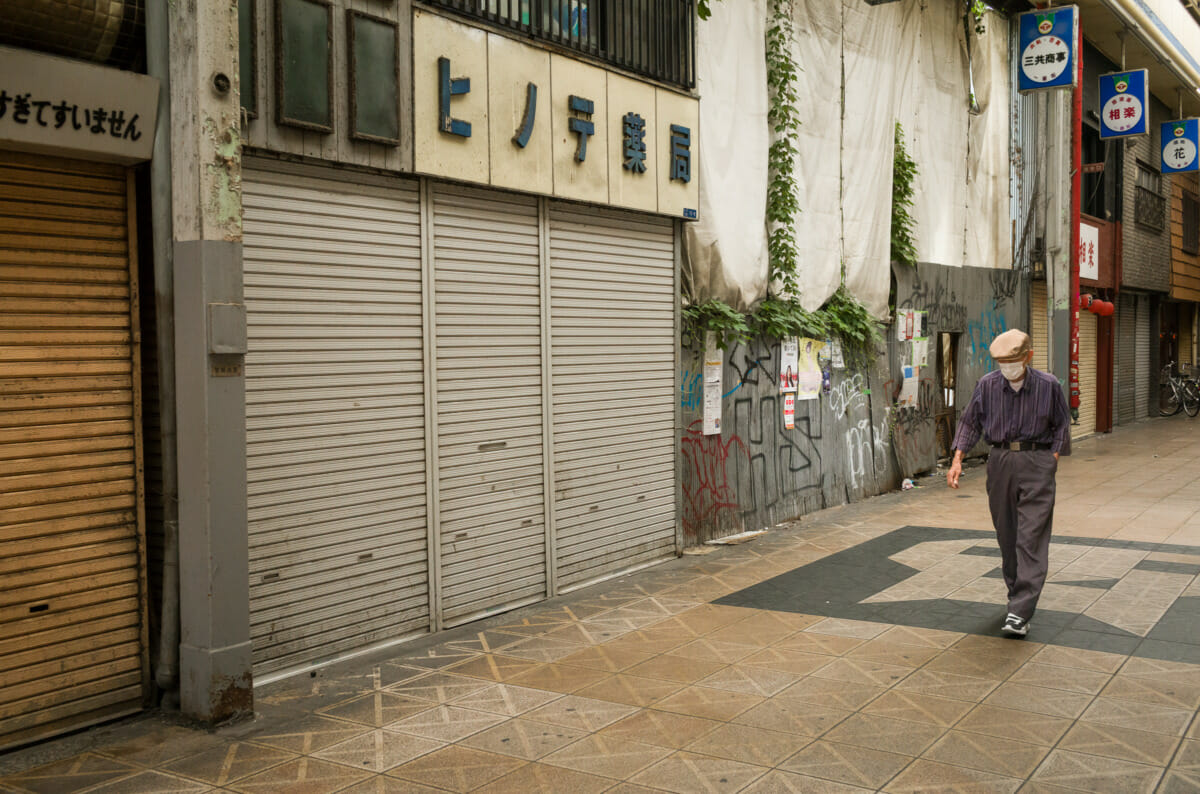
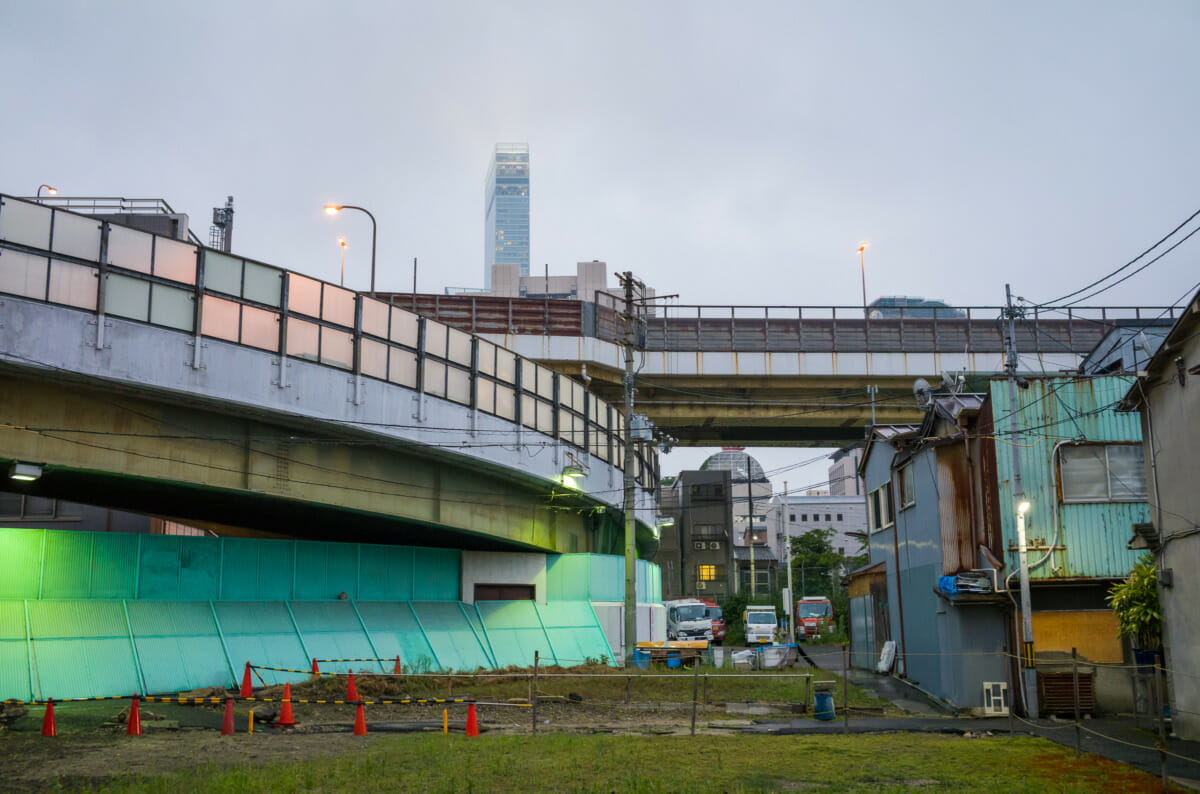
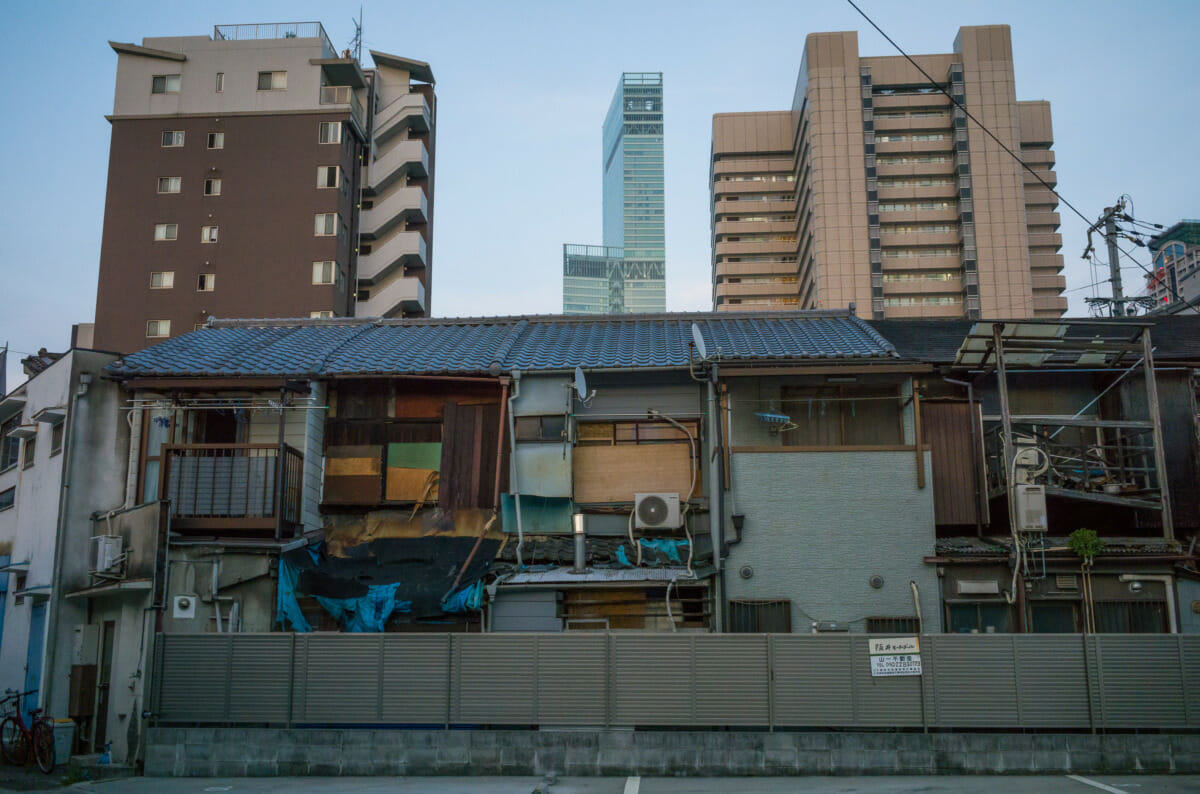

YesterdaysHero says
This is excellent documentation. The modern skyscraper is the giveaway but the other photographs would be hard to date without it.
Lee says
Thanks ever so much. Yeah, apart from some masks (and they have been round for decades anyway), there is definitely a timelessness of sorts about the place.
Richard says
Do not see that kind of poverty much anymore in Japan. Is it a reminder of the past? Or, unfortunately, a harbinger of what could become more common as the population continues to shrink?
Lee says
There’s certainly a lot visible in this area. Think there is a lot more than most if us imagine in general to be honest, but it’s certainly nowhere near as overt (and in some cases extreme) as it is in Nishinari.
David May says
Great photos Lee, I lived in Osaka 25 years ago near Tenoji which has areas with the exact same feel, which you describe really well
For Japan they are so real they feel exactly the opposite – definitely a relic from the past. Thanks for posting these.
Lee says
Thank you very much, and reassuring to hear you felt the same. Being very much a visitor it’s easy to get the wrong impression. And yeah, relic from the past for sure. Hard to imagine it lasting that much longer. At least not on the current scale anyway.
Denise says
These are very powerful photographs. Thank you for sharing this other side of Japan that I wouldn’t see otherwise.
Lee says
Thanks a lot, that’s very kind of you. And you are welcome. My time there was fascinating to say the least.
cdilla says
A most educational collection of documentary photographs. The first and last perfectly bookend the set. I’ve been looking at them in detail since you posted them and have decided (possibly wrongly) that what is missing to considerably lift the mood of the area is more people and less daytime shutters. Thinking back to the days I visited local markets and shopping streets in the UK in the late 60s and early 70s much of the feel would be the same. No need for polished steel and gleaming multiglazed windows everywhere; old stone, wood and single pane glass, faded posters and handwritten signs have so much more warmth. Whilst the uniformed polite and professional staff in a modern Tokyo store are wonderful, I can’t help but miss the moody “Arkwright” and his wife (always generous with the weighing of our 2oz of loose sweets) in our corner shop.
Lee says
Thanks. Happy with how these all worked out.
It’s actually quite a change at night, as a load of karaoke bars have opened up making it feel very different than in the daytime. The shuttered shops though will likely stay that way til the whole area is demolished…
LAObserver says
The first and last photos are wonderful. It is always so interesting to see the changes in a location between day and night exposures. For someone with an inclination towards architecture, the night shot especially shows how subtle lighting and location of the lighting can truly make a city so magnetic after the sun goes down.
Lee says
Thanks a lot. Took the last one on my first night because it was so atmospheric in the rain and low cloud. Fortunately that prompted me to get a daytime version from the same vantage point as well. Very glad I did as the the contrast of the new and old really is something.
Damien says
Super charming ‘hood. Would love to take a soak at that sento some time before it disappears. Nice work Lee.
Lee says
Thanks a lot. Yeah, it’s a special place for sure. It has a lot of problems, there’s no getting away from that, but at the same time it’ll still be a huge shame when it disappears. And yeah, next time I’m there I need to visit that sento as well.